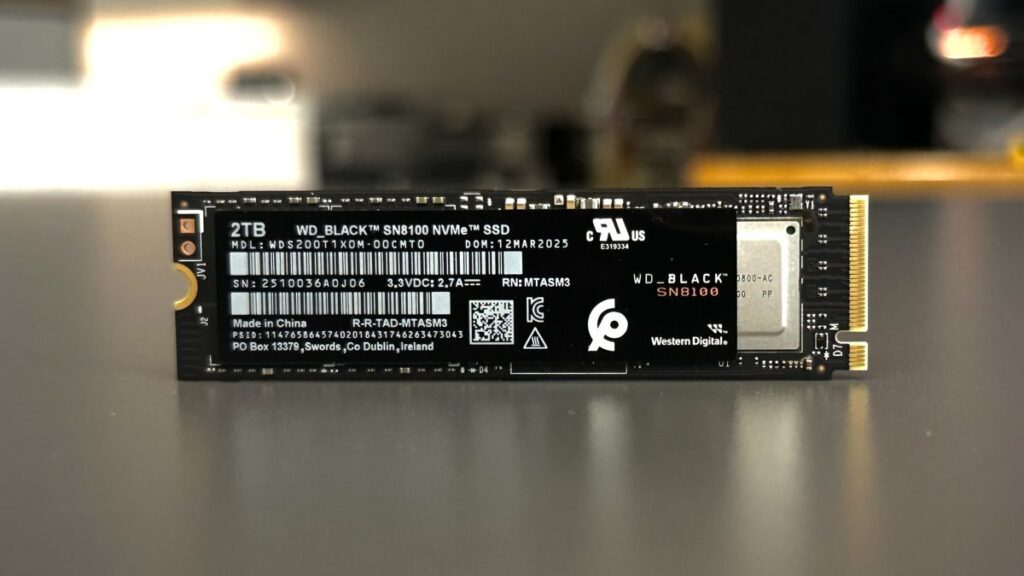
As we move into 2025, PCI Express 5.0 SSDs are making waves in the storage industry, promising unprecedented speeds and efficiency. These high-performance drives, known as PCIe 5.0 or Gen 5, are being heavily promoted by major SSD manufacturers, eager to showcase their capabilities. The latest models boast throughput speeds that double those of their predecessors, PCIe 4.0 SSDs, marking a significant leap forward in data transfer technology.
Despite their impressive specs, PCIe 5.0 SSDs are currently compatible with a limited range of devices, primarily recent desktop computers equipped with the necessary M.2 slots. Advances in thermal management technology are expected to facilitate broader adoption, allowing these SSDs to be integrated into both desktops and laptops.
Understanding PCI Express 5.0
PCI Express 5.0 represents the fifth iteration of the PCI Express standard, a crucial interface for connecting and transferring data between hardware components within a computer. Each new generation of PCI Express has effectively doubled the data transfer rate per lane, and PCIe 5.0 is no exception. Announced in 2019, the first consumer models became available in early 2023, offering sequential read speeds of up to 14,800MBps and write speeds of 14,000MBps.
While these speeds are impressive, they’re not the sole measure of an SSD’s performance. Comprehensive testing using benchmarks like Crystal DiskMark, PCMark 10, and 3DMark Storage reveals that real-world performance can vary. Notably, some high-end PCIe 4.0 SSDs still rival or outperform lower-end PCIe 5.0 models in certain scenarios.
Who Should Consider PCI Express 5.0 SSDs?
PCIe 5.0 SSDs are primarily targeted at gamers, power users, and content creators who demand the highest levels of performance. These drives typically come in the M.2 Type-2280 format and feature advanced controllers from manufacturers like Phison, Silicon Motion, Samsung, and SK Hynix. They also utilize high-density TLC NAND flash memory, often with over 200 layers.
While initially designed with dual-sided chips, newer models are increasingly adopting single-sided designs, which are more compatible with compact heatsinks. This shift is crucial as it allows for the integration of PCIe 5.0 SSDs into laptops, although they remain predominantly used in desktop systems for now.
Requirements for Running PCI Express 5.0 SSDs
To fully exploit the capabilities of a PCIe 5.0 SSD, users need compatible hardware. This typically includes an Intel 12th Gen or later Core CPU paired with a Z690 or Z790 chipset motherboard, or an AMD Ryzen 7000 or 9000 processor with an AM5 motherboard. It’s important to verify that the motherboard specifically supports PCIe 5.0 M.2 slots, as not all do.
PCI Express 5.0 is backward-compatible, meaning a Gen 5 SSD can operate in older PCIe slots, but its performance will be limited to the maximum speeds of those standards.
Managing Heat: A Key Challenge
With the introduction of PCIe 5.0 SSDs, managing heat has become a critical issue. These drives generate significant heat, which can lead to thermal throttling if not properly managed. Manufacturers have introduced various cooling solutions, including passive and active heatsinks, and even liquid-cooling systems for custom setups.
As technology advances, SSD manufacturers are focusing on improving the energy efficiency of their products. This includes developing DRAM-less SSDs and enhancing the firmware and NAND flash memory to reduce heat generation without sacrificing performance.
The Future of PCI Express
The evolution of PCI Express is set to continue with the anticipated release of PCI Express 6 and 7. These future standards promise even greater data transfer speeds, although they remain on the horizon for now. For consumers, PCIe 5.0 SSDs are currently the cutting edge, offering more than enough speed for most applications.
For those considering an upgrade, this guide provides the necessary insights to choose the right PCIe 5.0 SSD. Whether you’re a gamer, a content creator, or simply in need of fast storage, understanding the capabilities and requirements of these drives is essential.
As the market continues to evolve, staying informed about the latest developments in SSD technology will ensure you make the best choice for your needs. For those not ready to make the leap to Gen 5, there are still plenty of high-performing PCIe 4.0 options available.







